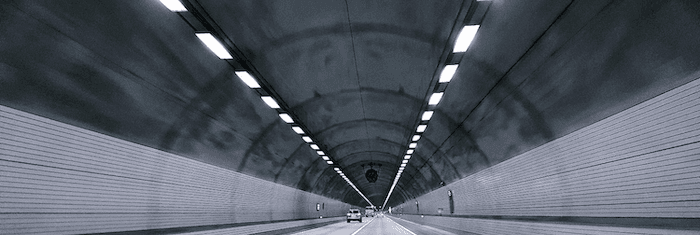Health and safety issues associated with the traffic system, such as improving visibility for drivers, has attracted increasing attention in recent years due to the soaring rates of deaths, injuries, and disabilities resulting from road traffic accidents.

Unlike an open road, a tunnel road is a relatively enclosed space where the lighting abruptly changes from bright to dark (“ black hole” ) at the entrance of the tunnel and from dark to bright light (“ bright hole” ) at the exit of the tunnel.
One of the major problems associated with road tunnels is the black hole effect. This phenomenon is due to the reflection of sunlight from the surrounding environment to drivers’ eyes, especially on sunny days, as well as the lack of adequate lighting at the entrance of tunnels, which reduces the contrast of the barrier at the tunnel entrance and causes some vision problems.
As a result, the risk of traffic accidents may be increased. When the tunnel entrance has the appearance of a black hole, it reduces the self-confidence of motorists and they may drive in a hesitant manner, negatively affecting traffic safety.
Addressing this issue with smart lighting in the entrance and exit of the tunnel is imperative to improve traffic safety. In daylight, road safety rules require that drivers’ eyes adapt from lighting conditions outside of tunnel entrances to levels applied inside the tunnel. Good tunnel lighting allows users to enter, pass through and exit the tunnel safely and comfortably.
SUNLIGHT AS LIGHTING IN TUNNELS
The entrance zone of a tunnel is critical in regard to tunnel safety. Designing and implementing the best possible lighting solution provides the driver optimum visual comfort and safety.
At Parans we work together with architects, designers and engineering companies to bring innovations to tunnel constructions. Getting a seamless transfer of natural light from the access zone to the entrance zone aids companies to not only provide better illumination and safety, but also to save energy cost.

The Parans system will lead the sunlight into the tunnel in a way that previously has been impossible, minimizing the risk of “ black holes” thus ensuring the best possible safety for the road traffic. But also to save energy cost. A tunnel uses much more energy when we have clear blue sky, because there should not be too much difference in the light level inside and outside the tunnel in the entrance zone. The critical entrance zone of the tunnel consumes approximately a quarter of the tunnel’s total energy consumption. So, when we have bright sunlight and we need to add a lot of light to the entrance zone, we use the Parans system to instantly lead the sunlight into the tunnel and illuminating it with natural sunlight.
Illuminate Your Space
Ready to brighten your space with natural light? Parans solar lighting system harnesses the sun’s power to transform indoor environments sustainably. With advanced fiber optic lighting, we deliver sunlight deep into buildings, enhancing well-being and cutting energy costs.
Get Started Today
Whether it’s homes, offices, or unique projects, our innovative solutions offer eco-friendly brilliance. Explore how fiber optic lighting can elevate your next design—visit our products or contact us at sales@paranslight.com for a personalized quote today! Let’s illuminate your world, naturally.

